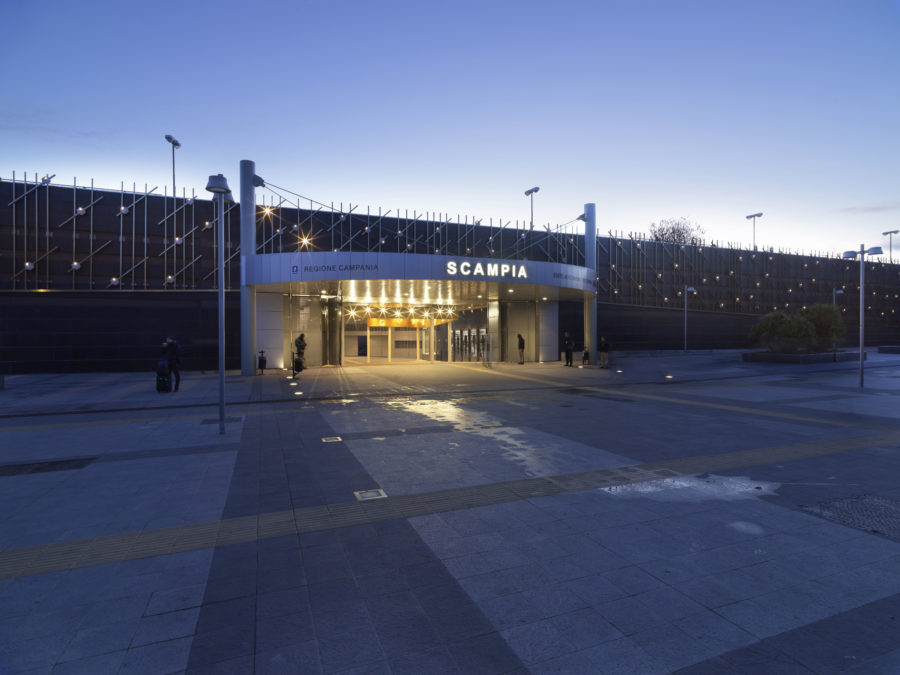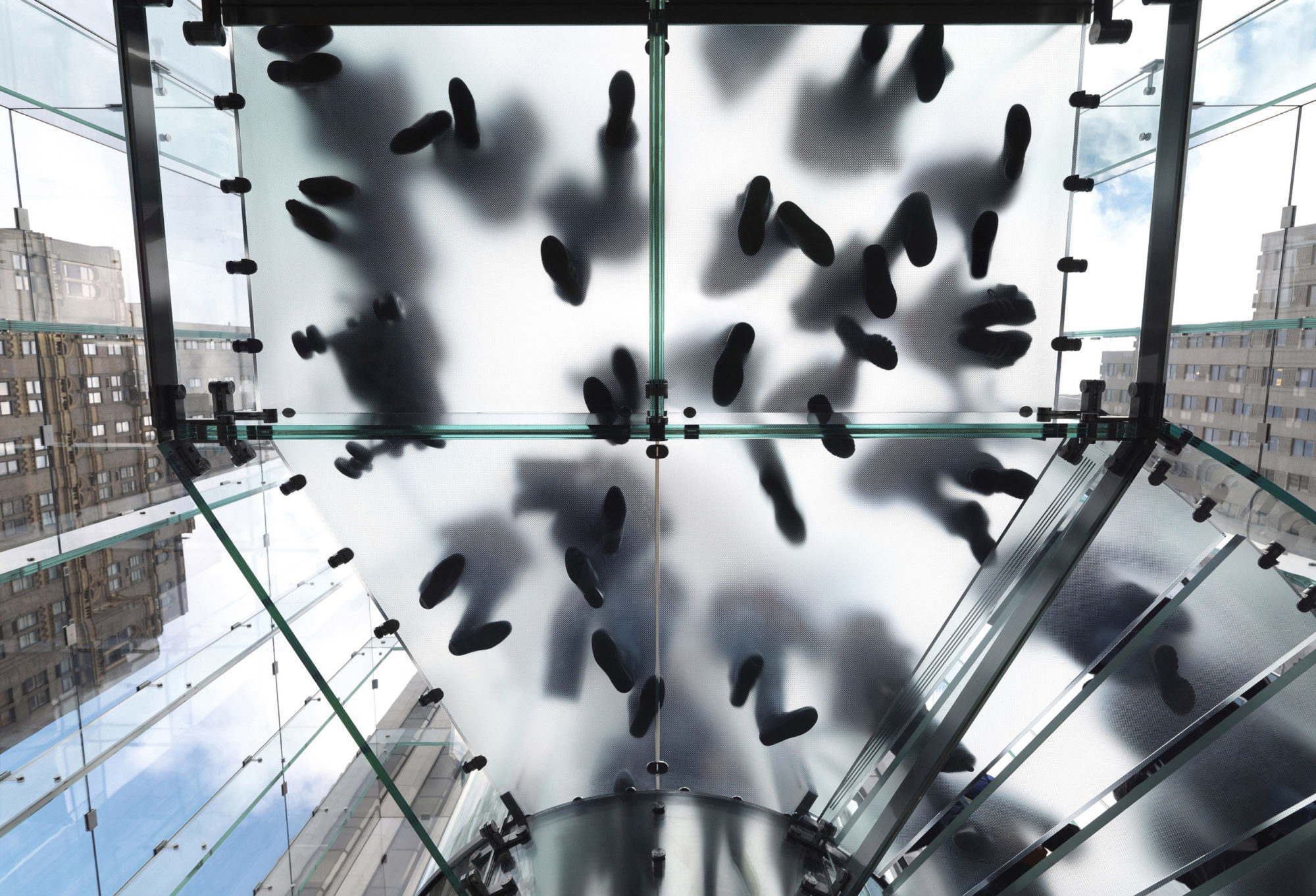Regione Campania
EAV
Fondazione Plart
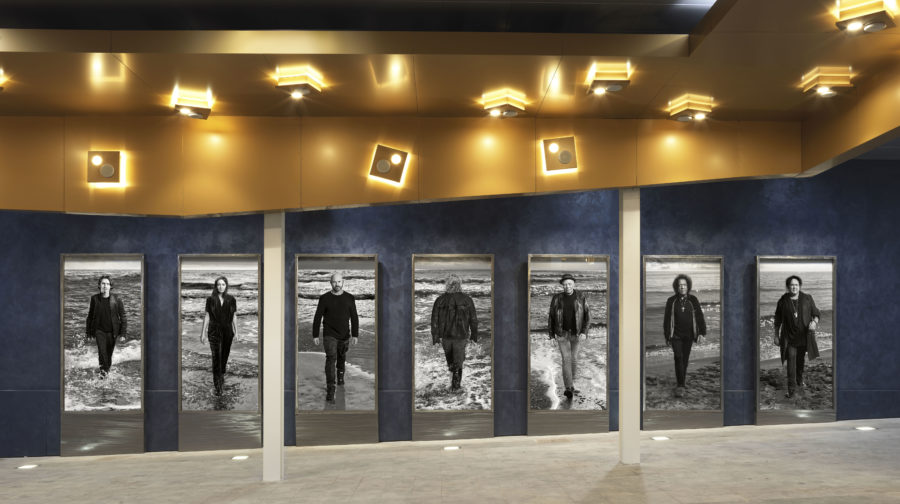
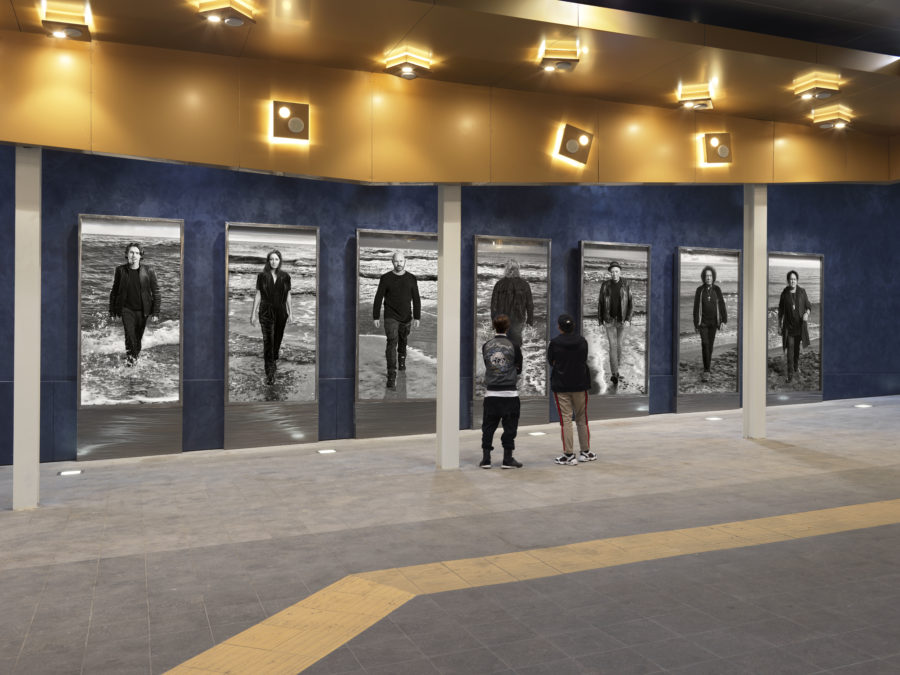
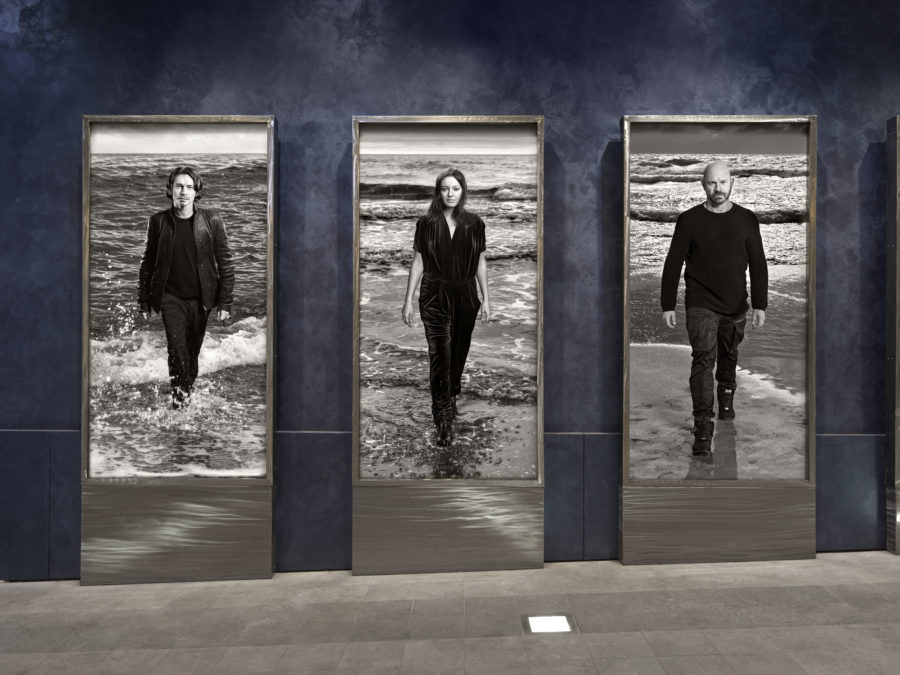
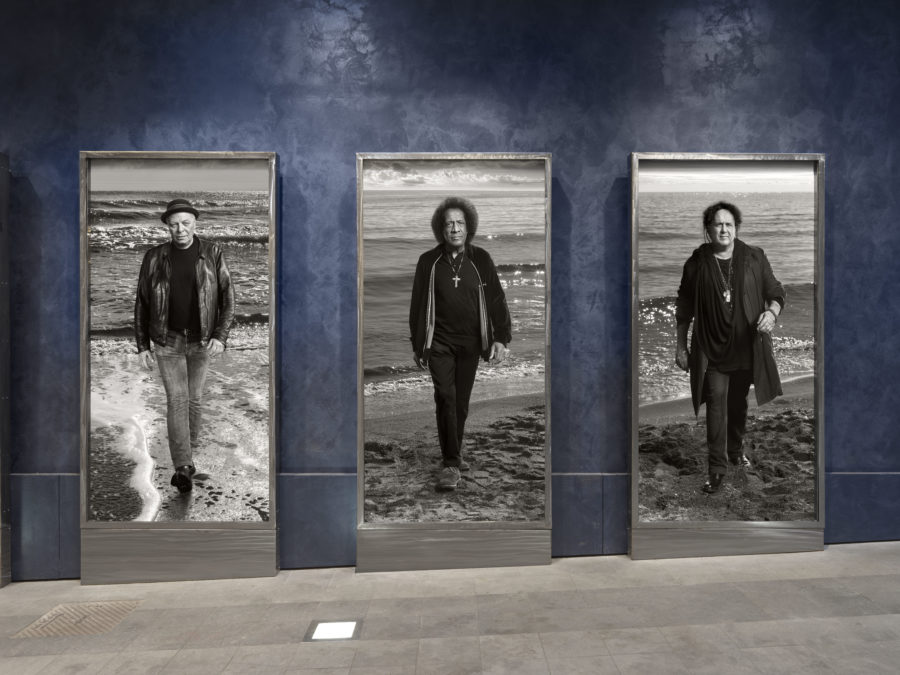
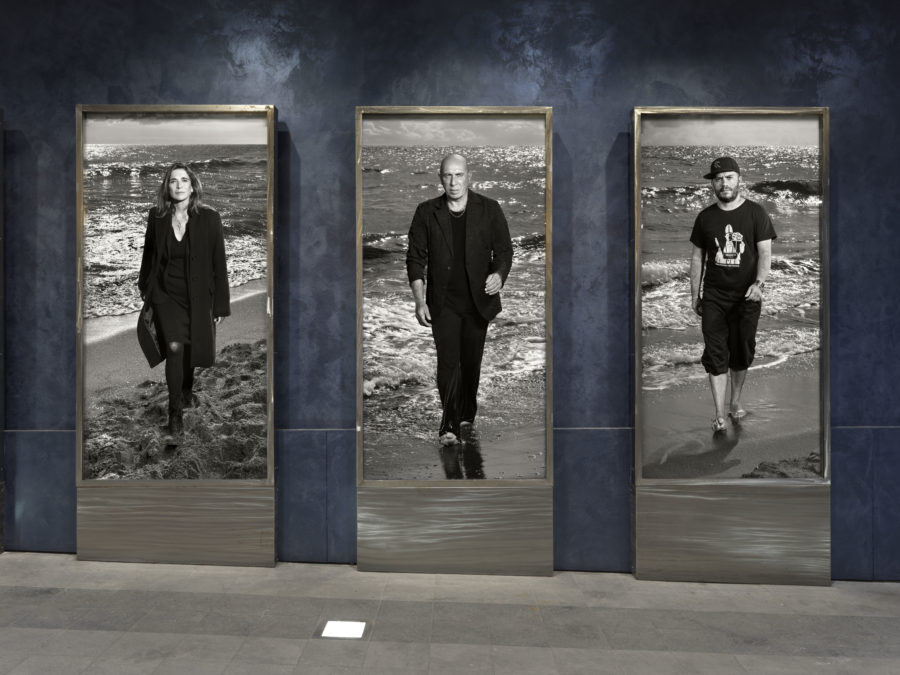
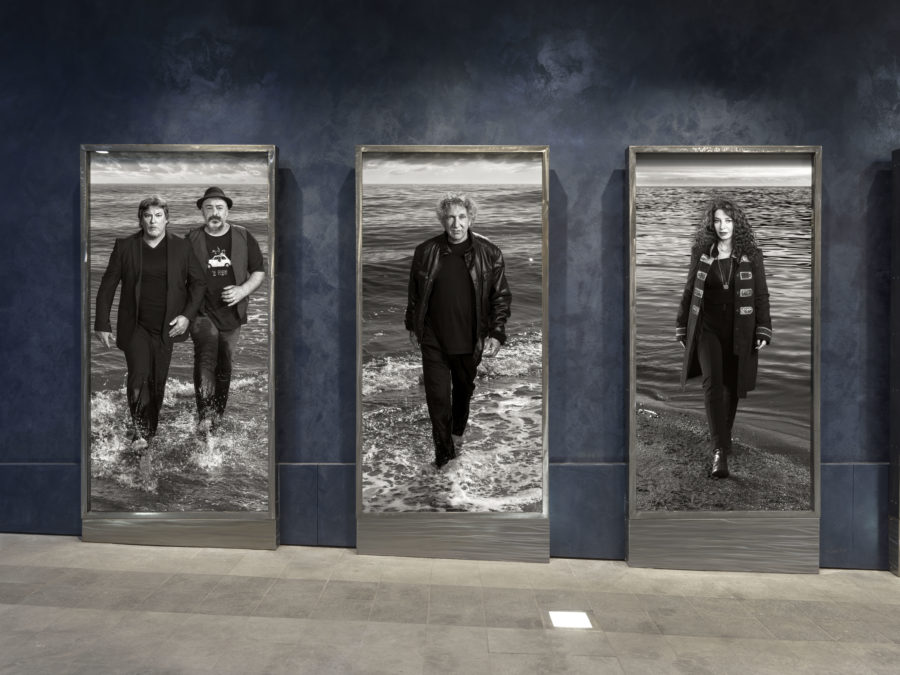
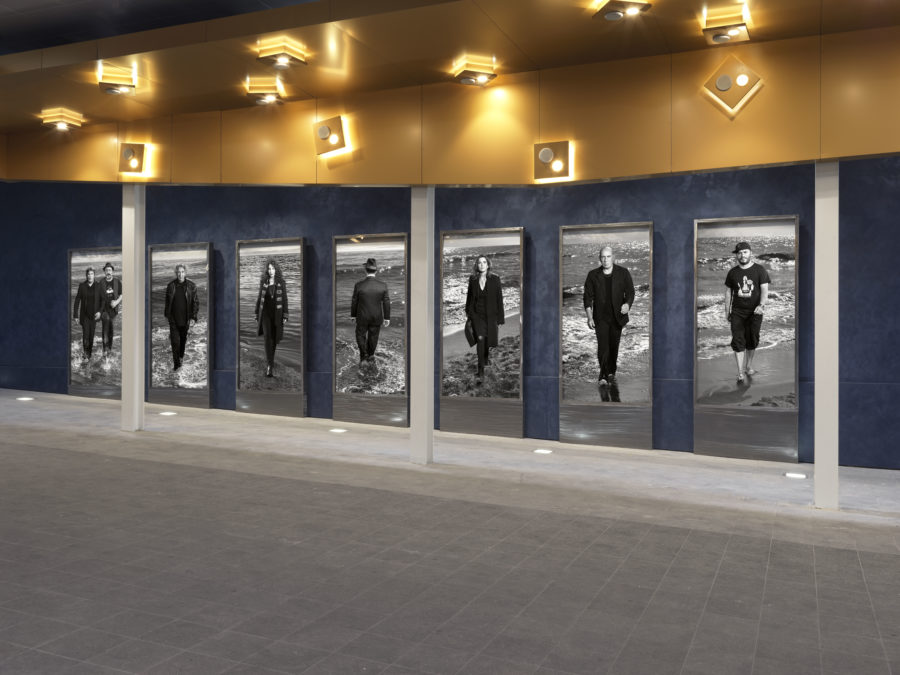
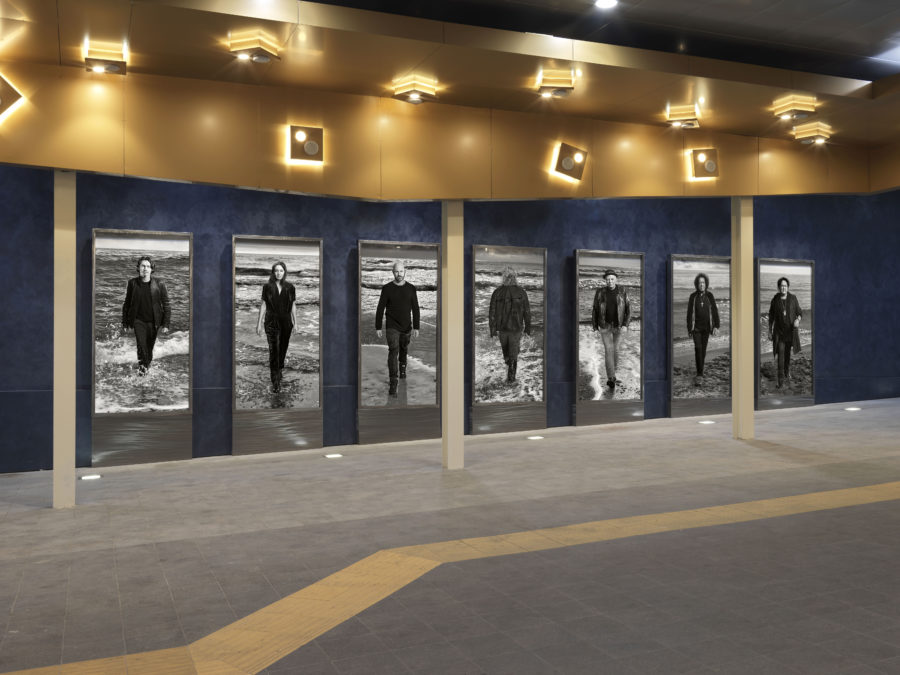
Luciano Romano’s portraits for Scampia Station in Naples Underground, December 2019
“Music cannot be posed, because of its nature, it escapes from any visual representation”. Still, in photographing music, the artist has found a metaphor just as credible as all the things that compose the Scambiapassi project: the sea, in its endless flow and inspiration, and our shimmering relationship with it. A sea that – with its gulf that shines at the “Sole mio” or under the glimmer of the stars and a “Luna Rossa” – has inspired a lot of Neapolitan music, but in Scampia, as in many other central districts of Naples, it seems historically and creatively so distant (after all, Anna Maria Ortese wrote that “The sea does not flow through Naples”). But it is the sea, indeed, that brings the harmonic evocation and rhythmic excitement of singing and music, making themselves “a possible representation” of their very “raison d’être”. Fourteen full-length pictures of Neapolitan musicians and singers, portrayed in black and white at the encounter between solar backlight and artificial lighting, placed along the same horizon line, the one among sea and sky, while they take a step forward, moving closer or going away, in a constant dynamic between scene and background, light and shadow, masculine and feminine, cultured and popular, memory and intuition. As if, even fixed on the photographic paper, these images return us the motion itself of the creative process from which Neapolitan songs and melodies were all originated on the shores of this gulf. The matrix structure of these portraits turns out to be the image of the German artist Joseph Beuys (Krefeld, 1921 Düsseldorf, 1986) We Are The Revolution (1971): every note and every chord of hope or desperation, seem to be recalled from this gesture that demands our attention and participation… “If I have tochoose an image, the Neapolitan music inhabits my thoughts like this”… And here there is another surprising reference in the genesis of Scambiapassi: precisely of a conception of art understood and practiced by Beuys as inclusion and activation, in a research that leads to the same level of existential event and maieutic and formative function of artistic acting. The art-life relationship originated from the Beuys’ Soziale Plastik, subverts an experience of artwork as a fetishistic object to contemplate for assuming an anthropological value and a democratic function of responsibility towards every human being, solicited to participate in the society’s decision mechanisms and to be committed actively, critically, responsibly. We Are The Revolution, therefore, is not only the image taken at Casa Orlandi in Anacapri becoming the manifesto published for the artist’s first personal exhibition in Naples, on 13th of November 1971, at the Lucio Amelio gallery. But it is also, and above all, a code word that seems to reverberate up to a public art project such as Scambiapassi, indeed, will be. Andrea Viliani
Le immagini fotografiche di Luciano Romano per la stazione metro di Scampia, dicembre 2019
“La musica non la puoi mettere in posa, per sua natura sfugge a ogni rappresentazione visiva”. Eppure, nel fotografare la musica, l’artista ha reperito una metafora altrettanto verosimile, come lo è tutto ciò che compone il progetto Scambiapassi: il mare, nel suo flusso e ispirazione senza fine, e il nostro cangiante rapporto con esso. Un mare che – con il suo golfo che risplende al “Sole mio” o sotto il baluginio delle stelle e di una “Luna rossa” – ha ispirato molta della musica napoletana, ma che a Scampia, come in molti altri quartieri anche centrali di Napoli, storicamente e creativamente sembra invece così distante (scriveva del resto Anna Maria Ortese che Il mare non bagna Napoli). Ma è appunto il mare che porta con sé l’evocazione armonica e l’eccitazione ritmica del canto e della musica, facendosi “possibile raffigurazione” della loro stessa “ragion d’essere”. Quattordici fotografie di musicisti e cantanti napoletani a figura intera, ritratti in bianco e nero all’incontro fra controluce solare e illuminazione artificiale, posti lungo la stessa linea d’orizzonte, quella fra mare e cielo, mentre fanno un passo in avanti, avvicinandosi o allontanandosi, in una costante dinamica fra scena e retroscena, luce e ombra, maschile e femminile, colto e popolare, ricordo e intuizione. Come se, pur fissate sulla carta fotografica, queste immagini ci restituissero il moto stesso del processo creativo da cui canzoni e melodie napoletane sono scaturite, tutte, in riva a questo golfo. La struttura-matrice di questi ritratti si rivela essere l’immagine dell’artista tedesco Joseph Beuys (Krefeld, 1921-Düsseldorf, 1986) La rivoluzione siamo noi (1971), riportata sul manifesto della mostra personale alla Modern Art Agency di Lucio Amelio e realizzata mentre l’artista era ospite di Pasquale e Lucia Trisorio alla Casa Orlandi di Anacapri: ogni nota e ogni accordo, di speranza o di disperazione, sembrano richiamati da questo gesto che reclama la nostra attenzione e partecipazione… “Se proprio devo scegliere un’immagine, la musica di Napoli abita così i miei pensieri”… Ed ecco un altro riferimento sorprendente nella genesi di Scambiapassi: quello appunto a una concezione dell’arte intesa e praticata da Beuys come inclusione e attivazione, in una ricerca che conduce sullo stesso piano vicenda esistenziale e funzione maieutica e formativa dell’agire artistico. Il rapporto arte-vita che scaturisce dalla Soziale Plastik beuysiana sovverte un’esperienza dell’opera d’arte come oggetto feticistico da contemplare per assumere un valore antropologico e una funzione democratica di responsabilizzazione nei confronti di ogni essere umano, sollecitato a partecipare ai meccanismi decisionali della società e a impegnarvisi attivamente, criticamente, responsabilmente. La Rivoluzione Siamo Noi non è quindi solo l’immagine scattata a Casa Orlandi ad Anacapri e diventata il manifesto pubblicato per la prima mostra personale dell’artista a Napoli, il 13 novembre 1971, presso la galleria di Lucio Amelio. Ma è anche, anzi soprattutto, una parola d’ordine che sembra riverberarsi fino a un progetto d’arte pubblica quale è, appunto, Scambiapassi. Andrea Viliani
